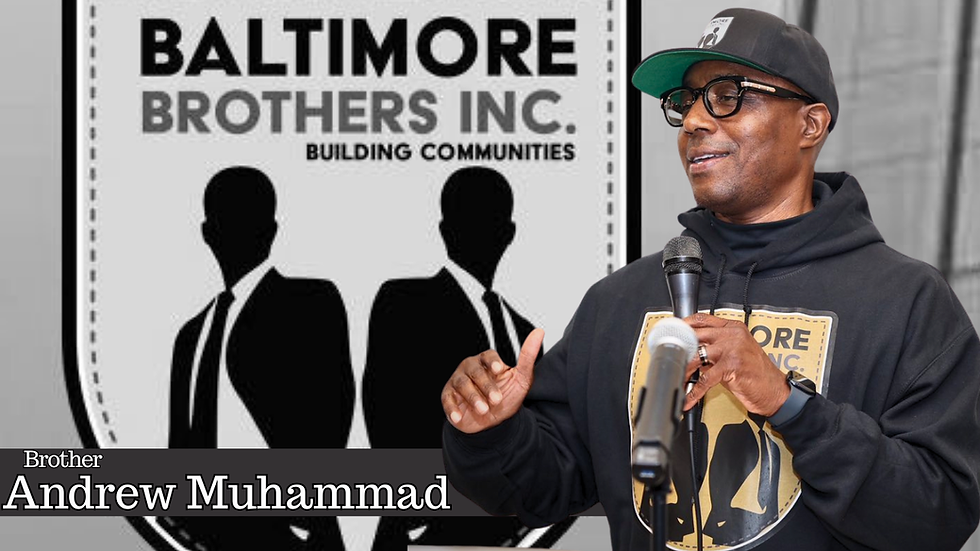The Power of Economic Leverage through Boycotting: Lessons from the Civil Rights Movement
- Brother Levon X

- Jan 20
- 3 min read

The Montgomery Bus Boycott stands as one of the most remarkable examples of how unity and economic leverage can bring about meaningful change. It was not just an act of defiance but a calculated strategy that forced systemic change by targeting the root of injustice—economic dependency. The Black community, tired of being mistreated, came together, pooled their resources, and sustained the boycott long enough to demand policy changes. It wasn’t easy, but it was effective because it hit where it mattered most: the economic bottom line.
Why Boycotting Works
Boycotting is a powerful tool because it disrupts the flow of money. In a capitalist society, money speaks louder than words. When done with intention and organization, boycotting sends a clear message: "We won’t support systems or businesses that exploit or harm us." The Montgomery Bus Boycott lasted over a year, a testament to the discipline and resolve of the people involved. It also highlighted the importance of community collaboration—carpooling, walking, and finding alternative ways to navigate daily life were all part of the effort. This kind of planning and collective action is what makes boycotts successful.
But boycotting only works when there is a clear objective. It's not enough to stop spending; the community must define what it is demanding in exchange for resuming financial support. This strategic focus is what turns a protest into progress.
Modern Issues Worth Boycotting
Fast forward to today, and the Black community still faces systemic challenges that could benefit from this kind of focused economic action. Take redlining, for example—a practice that has historically denied Black families the ability to own homes or access fair interest rates. It’s not just about housing; redlining has ripple effects on education, wealth-building, and community stability. Imagine a targeted boycott of banks or financial institutions that perpetuate predatory lending practices. Pair that with campaigns encouraging investment in Black-owned banks or credit unions, and you’ve got a movement that not only disrupts unjust systems but builds alternatives.
Another area ripe for economic leverage is combating gentrification. Many Black-owned businesses are being pushed out of historically Black neighborhoods because of rising rents and lack of support. A well-organized boycott of companies or developers that contribute to gentrification could shine a spotlight on these issues while rallying support for local businesses that align with community values.
The Role of Economic Unity
The Black community in America represents over $1 trillion in spending power. Yet, much of that wealth is spent outside the community, benefiting businesses that often don’t reinvest in Black neighborhoods. This is a missed opportunity for leverage. Dr. Martin Luther King Jr. understood this—his later work focused heavily on economic justice. King’s "Poor People’s Campaign" sought to address economic inequality through organized action, and it was this shift toward economic advocacy that made him a greater threat to the status quo.
The lesson here is clear: the power lies in unity. When the community prioritizes collective spending and aligns economic actions with strategic goals, it creates leverage that can’t be ignored. The enemy of progress is disunity, and without a plan, the power of the dollar is squandered.
Building a Movement Today
To effectively use economic leverage, we must ask ourselves:
What are we fighting for? Define the issue clearly, whether it’s housing discrimination, unfair lending practices, or lack of investment in Black-owned businesses.
Who holds the power? Identify the companies, institutions, or policies that perpetuate the problem.
What’s the plan? Organize a boycott or economic action that includes clear demands and alternatives. For example, if boycotting a major retailer, direct the community to spend at local, Black-owned businesses instead.
How will we sustain it? Boycotts are not short-term efforts. They require discipline, alternative solutions, and widespread participation. Use social media, community meetings, and grassroots organizing to keep the momentum alive.
What does success look like? Establish measurable outcomes, such as policy changes, commitments to fair practices, or increased investment in Black communities.
The Montgomery Bus Boycott proved that economic leverage works when it is intentional, organized, and sustained. Today, we have the tools and resources to replicate that success on a larger scale. The question is: will we? By learning from the strategies of the civil rights movement and focusing on economic unity, we can create the kind of change that uplifts our communities and builds a better future for generations to come.
Let’s not just remember the actions of those who came before us—let’s build on them.
References
Branch, Taylor. Parting the Waters: America in the King Years 1954-63. Simon & Schuster, 1988.
Risen, Clay. A Nation on Fire: America in the Wake of the King Assassination. Wiley, 2009.
Rothstein, Richard. The Color of Law: A Forgotten History of How Our Government Segregated America. Liveright, 2017.
Parks, Rosa, and James Haskins. Rosa Parks: My Story. Puffin Books, 1999.





Thoughtful directives.